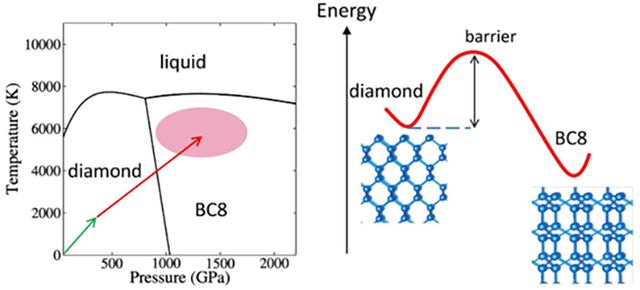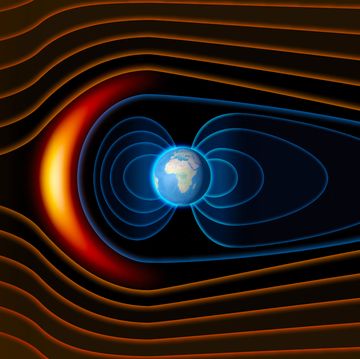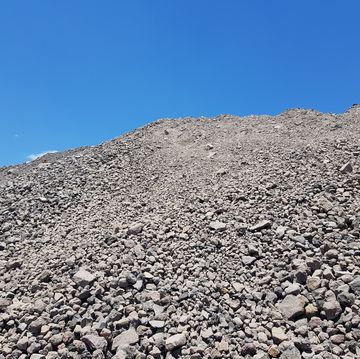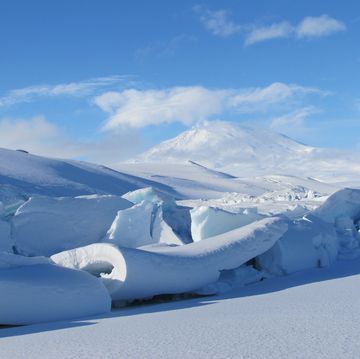- Diamonds are the hardest natural substance on Earth, but that may not necessarily be true on carbon-rich exoplanets where certain temperature and pressure conditions create an ultra-dense form of carbon called eight-atom body-centered cubic, or BC8.
- Scientists have known about BC8 for decades but have never observed the atomic structure, but scientists have now used a supercomputer to create simulations that help understand how BC8 could form.
- The simulations show that BC8 only forms in a narrow band of pressure and temperature, which is why finding the substance has been so incredibly difficult.
Diamonds are the hardest substance on Earth — but on other planets, the jury is still out. That’s because for some 40 years, scientists have theorized that diamond can squeeze into an even harder mineral known as an eight-atom body-centered cubic, or BC8. If true, this ultra-dense form of carbon would likely be found on carbon-rich exoplanets and would have both a higher compressive strength and thermal conductivity than diamond.
Simply put, its discovery could be a game changer for a variety of industries, and now scientists from Lawrence Livermore National Laboratory (LLNL) and the University of South Florida (USF) using the Frontier supercomputer have found a possible pathway toward creating BC8. The results of the study were published in The Journal of Physical Chemistry Letters.
“By efficiently implementing this potential on GPU-based (graphics processing unit) Frontier, we can now accurately simulate the time evolution of billions of carbon atoms under extreme conditions at experimental time and length scales," USF professor and study co-author Ivan Oleynik said in a press statement. “We predicted that the post-diamond BC8 phase would be experimentally accessible only within a narrow high-pressure, high-temperature region of the carbon phase diagram.”
Getting to even this supercomputer simulation evidence has been a long and winding road. First hypothesized in the 80s, BC8 was seen as a structure that maintained the tetrahedral atom shape as diamonds but eschewing the “cleavage planes” found in diamonds, according to the researchers. Because BC8 is also believed to exist at ambient conditions, this could make the substance structurally stronger than a diamond — but finding this elusive material hasn’t been easy.
ln 2009, an experiment at Sandia National Laboratories hinted at BC8’s existence but failed to glimpse its atomic structure. Then in 2015, LLNL’s own National Ignition Facility (the same one that achieved fusion ignition back in December 2022) leveraged x-ray diffraction techniques in a years-long search for BC8. Although the team probed carbon structures at unprecedented pressures of around 2,000 gigapascals (about 5 times the pressure found at Earth’s core), the crystal structure remained in a diamond form even beyond predicted phases.
“The extreme conditions prevailing within these carbon-rich exoplanets may give rise to structural forms of carbon such as diamond and BC8,” Oleynik said in a press statement. “Therefore, an in-depth understanding of the properties of the BC8 carbon phase becomes critical for the development of accurate interior models of these exoplanets.”
This compelling theory that BC8 must exist on other worlds propelled scientists to search for answers through other means — i.e. supercomputers. Using “multi-million molecular-dynamics simulations” at Frontier, a supercomputer at the Oak Ridge Leadership Computing Facility in Tennessee, the team discerned the metastability of diamond at extreme pressures. This was achieved largely in part due to improvements to understanding the interactions between atoms with quantum accuracy across a large range of pressure and temperature conditions, according to the researchers.
The major finding helps explain why previous attempts at finding BC8 were unsuccessful because it turns out that the super-diamond can only form in a very narrow band of pressure and temperature.
Scientists are now busy exploring if these theoretical pathways can finally produce some very real-world results.
Darren lives in Portland, has a cat, and writes/edits about sci-fi and how our world works. You can find his previous stuff at Gizmodo and Paste if you look hard enough.














